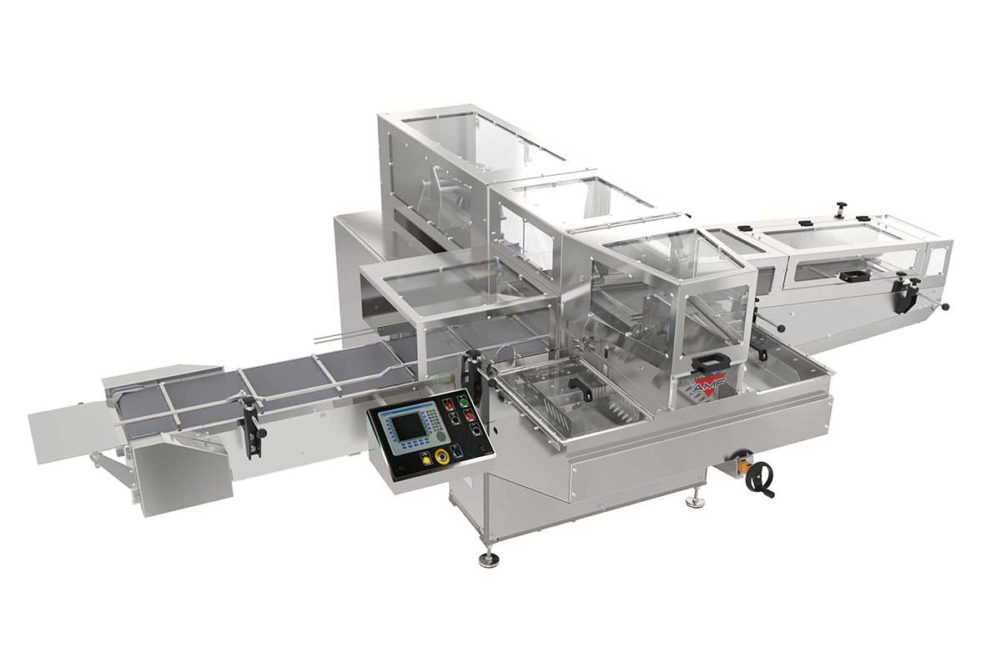Ensuring problem-free runs with bagging and closing equipment in bakeries means having a good understanding of the tools and equipment. For instance, properly bagging bread means using a bag that fits the loaf. It sounds obvious, but some bakeries try to make do with the same bag for all their products.
“Sizing your bag properly to your product is key,” said Justin Atkins, director of sales, Bettendorf Stanford. “When you’re going to a high-speed automated line, you’ve got to have the right-sized bag for the right-sized product. That’s all part of the proper setup. Making sure you’re using the right bags, making sure you’re using the right scoops, making sure you’ve got the bagger and slicer timed properly.”
The proper setup also will help keep the bags intact, which preserves the product and helps the bagger run efficiently.
“Other factors include machine automation, such as recipes for setups of machine parameters, along with automatic guide settings and cameras for system monitoring and troubleshooting,” said Richard Kirkland, president, LeMatic Inc.
The same goes for equipment putting the twist tie or plastic clip on the bags.
“We would encourage our bakery partners to operate closure equipment at the correct speed for the application and that equipment is properly interlocked,” said Josh Hughes, sales account manager, Burford Corp., a Middleby Bakery company. “Doing so will greatly reduce product waste and undue wear and tear on the equipment. Obviously, this will equate to a monetary savings in the form of waste reduction and parts replacement.”
Another key to avoiding problems and keeping high-speed lines running smoothly involves having a backup system.
“Typically, we have an additional bagger on the line that serves as a backup,” said Bert Vanmiddelem, Northeast and Canada sales manager, Pattyn North America. “As soon as a problem is detected on a bagger, production instantly switches to the backup bagger.”
Mr. Atkins suggested using a double-loaf eliminator with high-speed setups, which can also help avoid problems.
“If you’ve got two [loaves] in the flight, you can jam up the system,” he said. “And in a high-speed line when you jam up the system, you’ve got 50 to 60 loaves of bread coming at you every single minute. There’s nowhere for it to go if that system stops.”
Alain Lemieux, product group leader, wrap room, AMF Bakery Systems, stressed the importance of running equipment at the appropriate speed for the loaves bakeries are producing.
The product sizes on specialty breads can vary, which might require a lower speed. And bread should be bagged at the right temperature.
“Avoid bagging product that is not properly cooled down to optimal temperature and minimal humidity content,” Mr. Lemieux said.
The coronavirus (COVID-19) has forced bakeries and equipment manufacturers to get creative when it comes to servicing machinery. Having someone hop on a plane to then spend time inside a bakery is problematic at both ends.
“We are doing more and more virtual sessions for new machine installations or service needs,” said Ron Cardey, senior vice president, customer engagement, Kwik Lok. “Although we always like to meet our customers at their locations to understand their specific facility needs, working virtually has been very successful.”
Remote evaluations and maintenance were rare before the pandemic, said Dennis Gunnell, president, Formost Fuji, but bakeries have gotten more flexible in accommodating a virtual assessment.
“Now people are more open to something as simple as bringing their iPhone or Android phone down to the machine and FaceTiming to say, ‘Look at this,’” he added.
This allows equipment experts to see the machine in action and identify problems or parts that may need to be fixed or replaced, which saves time and money.
Before the pandemic, manufacturers sent their technicians to assess the situation. Then they either had to wait for the parts to arrive to fix the problem or come back to install them later. Virtual troubleshooting has cut that time significantly.
“Now we offer assistance through video-sharing apps and have moved to offering remote support via HoloLens, which works across multiple platforms and offers a much more immersive experience for both our tech support and the customer,” Mr. Hughes said.
Food safety has been a concern throughout the pandemic, including some bakeries going to individually wrapped products and solutions that allowed bakeries to reduce or eliminate human handling.
“Some bakers are looking for tamper-proof packaging,” Mr. Lemieux said. “This can take multiple shapes from special ties to bag sealing systems.”
Bakeries operating high-speed lines must have machinery they can count on to keep downtime to a minimum. With maintenance, bagging and closing equipment can keep running in peak condition.






